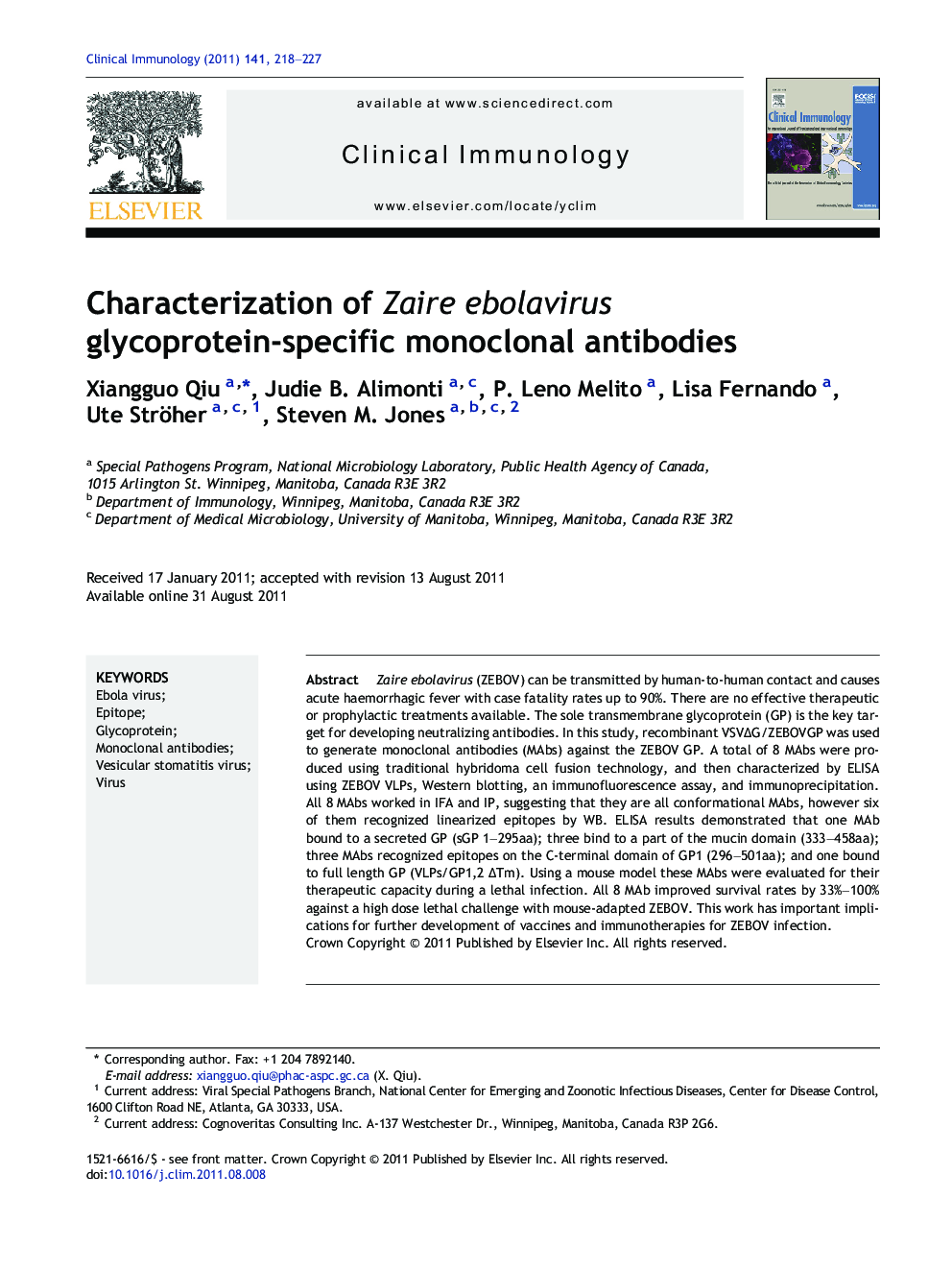| Article ID | Journal | Published Year | Pages | File Type |
|---|---|---|---|---|
| 3257223 | Clinical Immunology | 2011 | 10 Pages |
Zaire ebolavirus (ZEBOV) can be transmitted by human-to-human contact and causes acute haemorrhagic fever with case fatality rates up to 90%. There are no effective therapeutic or prophylactic treatments available. The sole transmembrane glycoprotein (GP) is the key target for developing neutralizing antibodies. In this study, recombinant VSVΔG/ZEBOVGP was used to generate monoclonal antibodies (MAbs) against the ZEBOV GP. A total of 8 MAbs were produced using traditional hybridoma cell fusion technology, and then characterized by ELISA using ZEBOV VLPs, Western blotting, an immunofluorescence assay, and immunoprecipitation. All 8 MAbs worked in IFA and IP, suggesting that they are all conformational MAbs, however six of them recognized linearized epitopes by WB. ELISA results demonstrated that one MAb bound to a secreted GP (sGP 1–295aa); three bind to a part of the mucin domain (333–458aa); three MAbs recognized epitopes on the C-terminal domain of GP1 (296–501aa); and one bound to full length GP (VLPs/GP1,2 ΔTm). Using a mouse model these MAbs were evaluated for their therapeutic capacity during a lethal infection. All 8 MAb improved survival rates by 33%–100% against a high dose lethal challenge with mouse-adapted ZEBOV. This work has important implications for further development of vaccines and immunotherapies for ZEBOV infection.
► rVSVΔG/ZEBOVGP was used to generate 8 monoclonal antibodies (MAbs) against ZEBOV GP. ► MAbs were characterized by ELISA, Western blot, IFA, and immunoprecipitation. ► The MAbs therapeutic capacity was evaluated in mice lethally infected with MA-ZEBOV. ► All MAb improved survival (33–100%) against a lethal infection of mouse-adapted ZEBOV.
